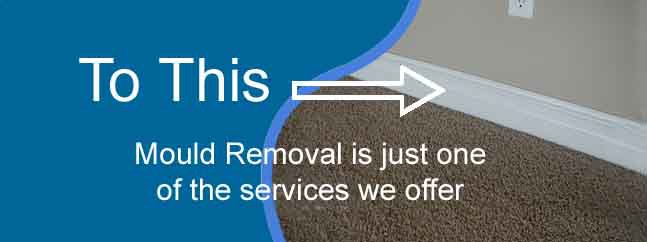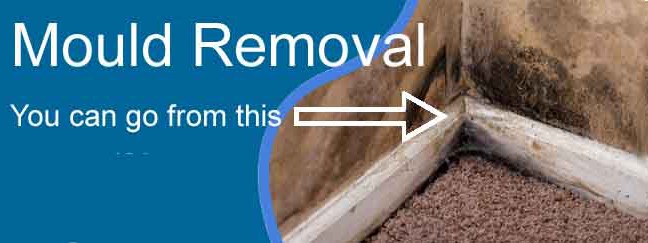WELCOME TO DAMP SOLUTION
Its all in the name DAMP SOLUTION We will come out and do a damp survey, then email you the report and finally come and do the required work.


 Rising Dampness is a blight that can affect external and internal walls alike. The source of dampness in this case comes is from ground water. The bricks and mortar in the dry upper parts of the wall acts like a sponge and draws water upwards. Well maintained, well-constructed walls will have an efficient physical damp proof course (DPC) and are unlikely to possess dampness unless the damp proof course has in some way been compromised, for example;
Rising Dampness is a blight that can affect external and internal walls alike. The source of dampness in this case comes is from ground water. The bricks and mortar in the dry upper parts of the wall acts like a sponge and draws water upwards. Well maintained, well-constructed walls will have an efficient physical damp proof course (DPC) and are unlikely to possess dampness unless the damp proof course has in some way been compromised, for example;
A Compromised physical DPC due to age and/or original use of poor material.
External materials ie soil, shingle, rubbish against the external wall below and above the DPC.
Existing DPC breached by home improvements ie addition of a porch, conservatory, adjoining wall etc. Materials within the cavity of a cavity wall construction.
Once the damp proof course has been compromised remedial action is required as soon as possible, continued presence of dampness on the upper walls will lead to deterioration of brickwork and internal plaster, décor.

Penetrating damp is moisture that soaks in through the walls from pretty much anywhere except the ground.
The common cause of penetrating damp is some type of defect with the building such as blocked water drainage pipes or a missing roof tile.
Preventing penetrative damp
Most of the time once the cause of the damp I.E the missing roof tile is rectified the damp problem will vanish although this depends on the exact cause of the penetrating damp.
It may be that further action is required such as silicon-based water repellent emulsions if the damp is coming directly through the wall.
Particular areas to check include: Roof gutters and drain pipes, Damaged or cracked walls, Roofs and tiles, Window sills and frames

Condensation is water vapour suspended in air. Condensation is a relatively new phenomenon resulting mainly from changes in lifestyle and our desire to keep heating costs as low as possible. Condensation is the air’s natural Moisture content settling on cool surfaces. The amount of moisture in the air is called relative humidity. If the humidity level rises about 70%, mould and mildew will be encouraged to grow. Astonishingly, the average family creates up to 10 litres of moisture every day, simply by washing, cooking and breathing. This moisture must go somewhere and be dealt with to avoid condensation.

Properly controlling moisture in your home will improve the effectiveness of your air sealing and insulation efforts, and these efforts in turn will help control moisture.
The best strategies for controlling moisture in your home depend on your climate and how your home is constructed.
Proper ventilation should also be part of a moisture control strategy.
Before you decide on a moisture control strategy, it helps to understand that moisture or water vapor moves in and out of a home in three ways:
1. With air currents
2. By diffusion through materials
3. By heat transfer.
Of these three, air movement accounts for more than 98% of all water vapor movement in building cavities.
Air naturally moves from high-pressure areas to lower pressure areas by the easiest path available — generally through any available hole or crack in the building envelope.
Moisture transfer by air currents happens quickly, and carefully and permanently air sealing any unintended paths for air movement in and out of the house is a very effective moisture control strategy.
The other two driving forces — diffusion through materials and heat transfer — are much slower processes.
Most common building materials slow moisture diffusion to a large degree, although they never stop it completely. Insulation also helps reduce heat transfer or flow.
The laws of physics govern how moist air reacts in various temperature conditions.
The temperature and moisture concentration at which water vapor begins to condense is called the “dew point.”
Relative humidity (RH) refers to the amount of moisture contained in a quantity of air compared to the maximum amount of moisture the air could hold at the same temperature. The ability of air to hold water vapor increases as it warms and decreases as it cools.
Once air has reached its dew point, the moisture that the air can no longer hold condenses on the first cold surface it encounters.
If this surface is within an exterior wall cavity, the result is wet insulation and framing.
In addition to air movement, you also can control temperature and moisture content. Insulation reduces heat transfer or flow, so it also moderates the effect of temperature across the building envelope cavity.
In most climates, properly installed vapor diffusion retarders can be used to reduce the amount of moisture transfer.
Except in deliberately ventilated spaces such as attics, insulation and vapor diffusion retarders work together to reduce the opportunity for condensation in a house’s ceilings, walls, and floors.
Moisture can cause problems in attics, various types of foundations, and walls, and the solutions to those problems vary by climate.

There are numerous species of wet rot but only one Dry Rot fungi.
These can be confused as some wet rot species look very similar to Dry rot
Incorrect identification can result in the problem not being fully eradicated and re-occurring at a later date – or, on the other hand -unnecessary work being carried out.
Dry Rot mycelium is able to grow through permeable bricks and mortar and thus effectively penetrate masonry.
Strands subsequently form in the mycelium and enable the fungus to conduct water and nutrients over long distances.
Growth will also travel behind plastered wall surfaces or along conduits that are embedded in the masonry.
Once such growth has reached other damp timbers; for example, joist bearing ends, timber lintels, door and window frames, a further outbreak will develop.
Of all of the wood rotting fungus Dry Rot (Serpula lacrymans) is by far the most destructive to buildings and the most difficult to eradicate.
It is essential that experience, expertise and great care are employed to ensure that any attack is properly and successfully dealt with.
Wet rot is a general term used to describe all but one of the fungal species responsible for timber decay.
The majority of timber decay found in buildings is caused by species of wet rot fungi.
Wet rot is caused by high moisture content in timbers coupled with poor ventilation.
The extent of the attack to the timber will, therefore, be limited to those areas that contain sufficiently high moisture content.


